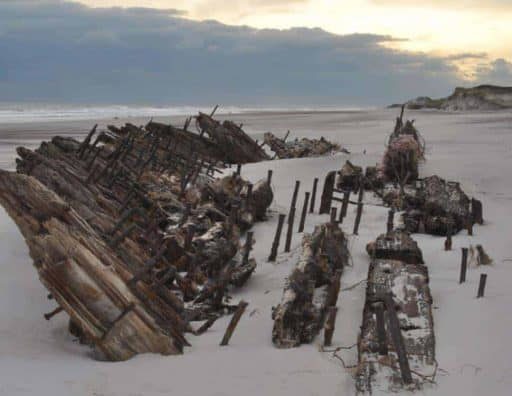Fire Island’s roots date back to 1653, when Isaac Stratford constructed a whaling station on the island, naming it Whalehouse Point. Similar to Nantucket, Fire Island was originally founded as an important whaling center during the 18th and 19th centuries.
Before Isaac Stratford, the island was said to be inhabited by Native Americans who hunted seal and whale. They made wampum from the shells on Fire Island which made beads for necklaces as a fashion statement of the Native Americans. Dutch settlers soon after inhabited the island and made use of the island’s whaling and hunting industry.
It was said to be originally named “Fire Island” because the pirates living on the island started fires to lure vessels to shore. Other people believe the name came about because of the itch from the poison ivy that grew wildly on Fire Island, or for the color or its red autumn leaves.
Fire Island’s next development came in 1825 when the Federal government constructed the Fire Island Lighthouse at the western tip of the Island. Before the more advanced lighthouse was constructed, there were many shipwrecks on Fire Island. To this day, many shipwrecks are still being uncovered off the coast of Fire Island.

One of the old shipwrecks that was found 11 miles off the Fire Island coast was the USS San Diego. Another one that was recently unearthed was the Bessie White after Hurricane Sandy washed the remains to shore.
The newer Fire Island lighthouse that was constructed had more lights and was almost twice the size. The Fire Island Lighthouse was an important landmark for transatlantic ships coming into New York Harbor at the turn of the century. For many European immigrants, the Fire Island Lighthouse was their first sight of land upon arrival to America. This guiding light serves as the trademark of Fire Island and still stands as both a landmark and a museum.
Real Estate boomed in the 1950s and Fire Island emerged as the premier bohemian summer retreat. Newly established beach bungalows lit up with creative New Yorkers. Over the next ten years, the landscape became a collage of rooftops where the rich and famous were able to escape the busy streets of New York City and soak in the sun.
Today, Fire Island is one of the chicest places to have a beach house. It remains popular among artists, actors, and musicians. The car-free, pastoral, beach getaway is a truly unique summer destination. Many people from NYC have a beautiful island to escape from the city hustle. It offers a pollution-free alternative, clean air and pristine beaches. We’re proud to state that Fire Island has never succumbed to the commercialism and class distinction that haunts the Hamptons.
GDFCFFCX162161169
